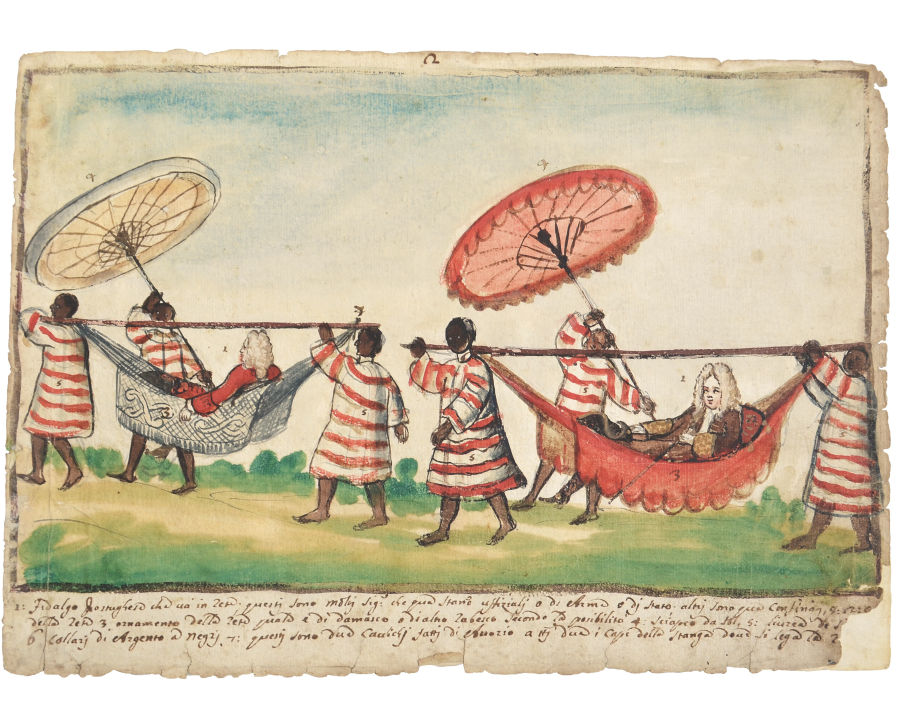PW002: Portuguese aristocrat[s] traveling in nets
1: Fidalgo Portughese che vá in rete;1 questi sono molti Sig:e che qua stan[n]o uffiziali o di Arma o di Stato; altri sono qua confinati, etc 2: [. . .] della rete 3: ornamento della rete quale e di damasco o di altro rabesco secondo la posibilitá 4: sciapeo da Sol2 5: livrea de s[. . .]3 6: collari di Argento a negri 7: questi sono due cavichi fatti di Avorio a tti due i capi delle stanga dove si lega la r[ete]4
1: Portuguese Fidalgo traveling in a net; these are many Nobles who are here officials of the Military or the State; others are here as prisoners, etc.5 2: [. . .] of the net. 3: ornament of the net which is of damask or of other arabesque according to the means 4: parasol 5: livery of s[ervants]6 6: silver collars for Blacks 7: these are two pegs made of ivory at each end of the pole to which the [net] is tied
- 1About the use of the hammock in Luanda see Dionigi da Piacenza and Michel Angelo da Reggio, Viaggio, 60-61. Antonio Zucchelli da Gradisca, Relazioni del viaggio e Missione di Congo nell’Etiopia Inferiore Occidentale del P. Antonio Zucchelli da Gradisca, Predicatore Capuccino della Provincia di Stiria, e gia Missionario Apostolico in detto Regno, ecc. (Venice: Bartolomeo Giavarina, 1712), 74.
- 2From the Portuguese, chapéu-de-sol: umbrella for the sun.
- 3The missing word here could be servitori (servants) or schiavi (slaves).
- 4For a similar description of hammocks in Luanda see “Letter from Michelangelo Guattini to his father of 1668,” in Michel Angelo Guattini da Reggio, Dionigi Carli da Piacenza, and Francesco Surdich, Viaggio nel Regno del Congo, Il fascino dell’ignoto 15, (San Paolo: Cinisello Balsamo, 1997), 185-86.
- 5Angola was a carceral colony.
- 6Or slaves, see above note 3.

Add new comment